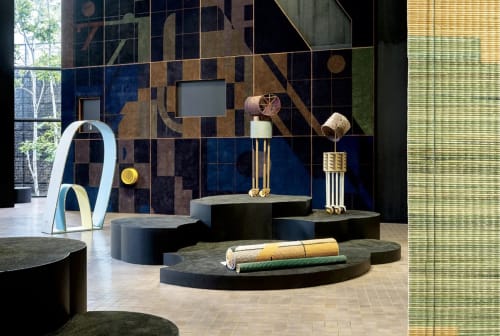Suki Seokyeong Kang can break your heart. Thinking back to the time, decades ago, when her grandmother was nearing the end of her life, the South Korean artist attempted to channel her in ultra-restrained sculptures, wrapping colored thread around skeletal steel cylinders and then gingerly perching one atop another at different angles. These curving “Grandmother Tower” pieces suggest bent-over, barely-there bodies, solid components forming precarious wholes. They exemplify Kang’s gift for redirecting post-Minimalist tropes toward affecting new ends.
Kang’s methods are so precise, so economical, that it is dangerously easy to miss the full extent of her achievements. (I confess that, amid the grand 2019 Venice Biennale, I pegged her characteristically subtle displays as bland and obscure.) But that is our problem, not hers. You have to look closely at her meticulous, gemlike objects to tease out their full allusive and anthropomorphic power and to grasp the import of the traditional Korean crafts that she adapts. Thankfully, it was easy to do that in this feast of a midcareer survey, “Willow Drum Oriole,”which arrayed more than 130 works from her many series across two floors. June Young Kwak, Leeum’s head of exhibitions, and EJ Cho, a curator there, organized the show.
The cavernous ground-floor space resembled a natural scene that had been abstracted into Kang’s idiom. “Mountain” sculptures (a recent series) for each of the four seasons—just a few steel curves adorned with threads and thin chains (winter is white and shaggy)—stood on pedestals, near vast dyed-wool carpets, Day, 2021–23, and Night, 2021, on the floor and a wall, respectively. These are rhythmic geometric abstractions defined by grids, which recur in Kang’s work. (The jeongganbo, a system of musical notation developed in fifteenth-century Joseon, now Korea, is one influence.) Here, too, were a soaring Grandmother Tower, 2018–19, and jaunty smaller sculptures: cylinders, some incorporating tree trunks, perched atop legs with wheels: forest creatures, perhaps. Recordings of wind and birds intensified the sense of being outside in the world.
A painter by training, Kang can conjure meaty, frenetic abstractions atop hanji, bark paper—there were a few here—but her most intriguing painterly works center on hwamunseok, handwoven rush mats that she makes with artisans. They tend to contain just a few predominant colors—shades of peach, evergreen, and pale mint, for instance—and fragments of what could be symbols or maps. The artist enclosed some mats in gridded metal boxes that obscure and enliven them and hung others loose, like abstract pictures, charismatic and mysterious. During the Joseon dynasty, court dancers, usually women, would perform atop such mats, majestic within narrow confines.
Operating within her self-imposed formal constraints, Kang built a beguiling, idiosyncratic Gesamtkunstwerk of a show in which everything felt strangely alive (even on the less-convincing second floor, a smaller black-walled space where she presented reductive metal sculptures of mountains and ears). A video showed performers interacting with her pieces (live “activations” also occurred) while elsewhere, on headphones integrated into sculptures, viewers could hear the artist and the musician Kevin Oh recite poems, in Korean and English, inspired by her work, written by various poets. One by Hee-kyoung Yoo reads, in part, “In this narrow meadow we are looking in different directions but / know each other as if in dreams.”


